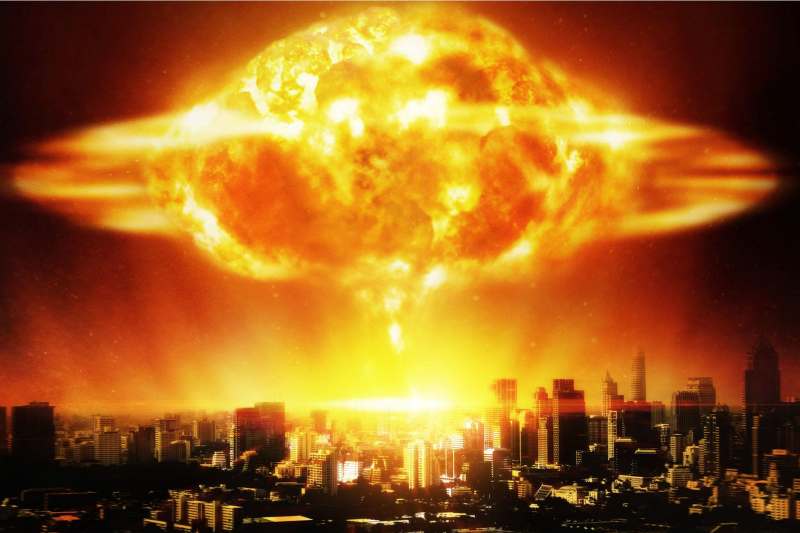
Nuclear tensions are rising fast in 2025. Countries like Iran Russia China and North Korea are at the center of growing global fears. The risk of nuclear war is no longer just theoretical. It’s real. And it's urgent.
This article explores where the tensions are highest what’s fueling them and what might come next as the world stands on edge.
Iran Nuclear Crisis in 2025 A Diplomatic Failure
Iran and the United States are once again at a dangerous impasse. The 2025 nuclear talks held in Rome collapsed without any resolution. Iran is continuing to enrich uranium at levels previously deemed unacceptable. The United States insists on a rollback but Iran refuses to compromise.
Supreme Leader Ayatollah Khamenei says Iran won’t back down. Meanwhile US leaders are warning of tougher sanctions and military options. With no nuclear deal in sight the risk of a direct Iran US confrontation grows by the day.
Israel vs Iran Rising Threat of a Preemptive Strike
Tensions between Israel and Iran have escalated sharply. After a missile strike on Israel in early 2025 many now believe Israel may launch a preemptive attack on Iran’s nuclear facilities. Israeli intelligence claims Iran is weeks away from achieving weapons-grade capability.
Leaders in both countries are using aggressive language. The Middle East is once again becoming a nuclear flashpoint. A single strike could ignite a regional war with global consequences.
Russia’s Nuclear Policy 2025 Lowering the Threshold for Use
Russia has changed its official nuclear doctrine. For the first time the Kremlin says it could use nuclear weapons during conventional war not just in response to a nuclear attack. This dangerous shift coincides with rising tensions in Eastern Europe and the ongoing Ukraine conflict.
The collapse of the New START treaty has left the world without any binding arms control agreement between the United States and Russia. With its new nuclear strategy Russia is signaling that it’s ready to act if pushed.
This is raising fears in NATO countries and among global security experts about a possible miscalculation that could spiral out of control.
China’s Expanding Nuclear Arsenal and Its Global Impact
China is quietly but rapidly increasing its nuclear capabilities. As of early 2025 the US Department of Defense estimates that China has over 600 nuclear warheads. That number could exceed 1000 by 2030.
Unlike during the Cold War China is now placing some warheads on high alert. This means they could be launched in minutes. While China’s leaders talk of peaceful development their military buildup tells a different story.
The expansion is creating serious concern among neighbors like India Japan and Australia. It’s also pushing the US and allies to re-evaluate their own deterrence policies in the Indo-Pacific.
India Pakistan Nuclear Standoff Tensions Over Kashmir
Tensions between India and Pakistan are also rising. Skirmishes along the Line of Control in Kashmir have resumed and both sides have issued sharp warnings. Both nations are nuclear-armed. Any conflict between them would pose a massive nuclear risk to South Asia.
Pakistan’s recent missile tests and India's increased border deployments have escalated fears of another major clash. With political instability in Pakistan and national elections approaching in India the situation could deteriorate quickly.
Global Nuclear War Risks and the Human Cost
Behind every headline are real people. If nuclear weapons are used the human cost would be staggering. The World Health Organization warns of radiation exposure mass displacement food shortages and long-term cancer effects.
And it wouldn't just affect the countries involved. Nuclear fallout could travel across borders and oceans. A regional war could have a global impact on health economy and environment.
What’s Driving the Rise in Global Nuclear Tensions in 2025
There are several key factors behind the surge in nuclear tensions in 2025
Collapse of major arms control agreements including New START
Renewed military alliances and regional arms races
Authoritarian regimes showing growing defiance to international norms
Advances in hypersonic and AI-driven weapons systems
Ongoing regional conflicts in Ukraine Gaza and Taiwan
All these issues combined make the global security landscape more dangerous than it has been in decades.
What Happens Next Global Predictions for Nuclear Diplomacy or War
There are three major paths that global events could take in the near future
Return to diplomacy The best case scenario is that nuclear powers return to the negotiating table. New arms control deals could reduce the risk of accidental war.
A new Cold War We may be entering a prolonged period of military buildup cyber warfare and geopolitical standoff without direct conflict.
Outbreak of war The worst case A localized war involving nuclear-armed nations spirals into a global nuclear confrontation.
The decisions made by world leaders in the coming months will determine which path we follow.
Conclusion Rising Nuclear Threats Demand Global Unity and Action
The world stands at a nuclear crossroads. Tensions are rising from Tehran to Moscow from Beijing to Islamabad. The threats are real and the risks are growing. But this doesn’t have to end in catastrophe.
There is still time to step back. To negotiate. To cooperate.
If leaders don’t act now the cost could be unimaginable. Rising nuclear tensions in 2025 must serve as a global wake-up call before it’s too late.
Disclaimer This article is for informational purposes only and does not provide real-time intelligence. Always consult official government sources or trusted news outlets for current developments.